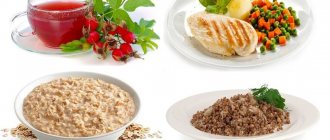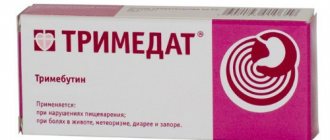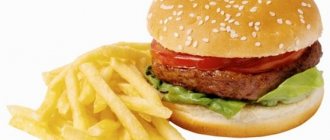Diagnosis of pathology is not only a lengthy process, but also complex. Each disease has its own characteristic symptoms, the presence of which can confidently make a diagnosis. Pancreatitis is also detected. If a disease is suspected, the doctor conducts a thorough interview with the patient and only after that begins to examine him. In this case, attention is paid not only to appearance, but also to the results of palpation and percussion. In this case, we can identify the main symptoms that most often appear with pancreatitis and are named after the doctors who discovered them.
Characteristic signs of pancreatitis
When examining a patient, first of all, the existing pain sensations are assessed, as well as changes in sensations during palpation. In this regard, the following characteristic features are highlighted:
- Voskresensky's symptom. Defined as a lack of sensitivity to the beating of the aortic wall in the area of its contact with the gland. The point is located 5-6 centimeters above the navel and 4 centimeters towards the projection of the gallbladder. In order to determine the Voskresensky symptom, it is enough to make a sliding movement from the epigastric area towards the projection of the liver using a stretched fabric of thin clothing. In 70% of cases it gives a positive result for pancreatitis. Due to the peculiarity of its implementation, the Voskresensky sign is sometimes referred to as the “shirt symptom.”
- The Mayo-Robson sign is defined as severe pain at a point located in the projection of the body and tail of the gland. In order to find the point, you need to mentally draw a line from the navel to the middle of the lower rib on the left. The painful area will be located in the middle third of this line. The Mayo-Robson symptom is detected in almost 50% of cases with pancreatitis. Determined by lightly pressing on this point. Increasing pain indicates a positive Mayo-Robson sign.
- Kerthe's sign is pain on palpation in the area located five centimeters above the navel along the center line. Detected in 65% of cases with pancreatitis. In addition, the Kerthe sign is positive when identifying muscle tissue tension in the epigastric area
- Kach's symptom is defined as severe pain when trying to palpate the area in the projection of the tail of the gland. The Kacha point is located in the area of the transverse process of the eighth thoracic vertebra. The sign is most often positive in the chronic course of the pathology. In some cases, pancreatitis can be detected in the form of increased sensitivity of the skin in the specified area.
- Razdolsky's symptom is more often detected in acute pancreatitis. It manifests itself in the form of sharp pain that occurs during percussion of the skin in the area of the projection of the gland. Caused by severe inflammation of the peritoneum.
The presence of one of the listed signs is the reason for hospitalization of the patient for the purpose of further examination.
XI. Trauma Skull Symptoms
Symptom Battle.
Battle s. – a sign of a fracture of the base of the skull: a change in skin color in the area of the mastoid process of the temporal bone, up to the appearance of ecchymosis.
Gerard-Marchant symptom.
Gerard - Marchand s. – a sign of an epidural hematoma: pain and swelling in the temporo-parietal region.
Symptom Sedan.
Sedana s. – a sign of a closed skull injury: convergence of the eyes leads to divergent strabismus.
Sicard-Collet syndrome.
Sicara – Colle s. – sign of a fracture of the base of the skull: paralysis of the IX, X, XI, XII pairs of cranial nerves.
Additional symptoms
In addition to the above, other symptoms can be identified, named after the names of doctors. Most often, specialists use the following methods during diagnosis:
- Mondor's sign appears more often in acute pancreatitis. It is characterized by the appearance of dark blue spots on the patient’s skin. They can be localized both on the body and on the face. The reason for their appearance is the entry of toxins released by the gland into the blood and further into the layers of the skin.
- Grotta's symptom manifests itself in severe pain at certain points. Each of them has its own name and is confirmation of the presence of inflammation in a certain part of the gland.
- Desjardins' sign manifests itself as pain at a point located four centimeters above the navel along the line connecting it to the armpit on the right. For pancreatitis, it is positive in 70% of cases.
- Inflammation of the head of the gland is determined by a positive symptom at the Shoffard point.
- With pancreatitis, a positive reaction is often detected when pressing a point located in the fossa in the area of the sternocleidomastoid muscle. The trait is called Mussi-Georgievsky. It appears as a result of severe irritation of the peritoneum and irradiation along the nerve branches of the diaphragm.
Important: the Mussi-Georgievsky symptom can be positive with pancreatitis, cholecystitis and perforation of the ulcer, which requires differential diagnosis.
- Tuzhilin's sign is manifested by the appearance of burgundy spots in the form of bruises, up to four millimeters in size. Diagnosed, as a rule, with relapse of pancreatitis.
In addition to the above, other symptoms that occur with pancreatitis can be identified. Large bluish spots localized on the lateral surfaces are called Gray-Turner sign. If such hemorrhages are localized around the navel, then Cullen’s symptom is considered positive. With pancreatitis, not all of the listed signs may be present. At the same time, the appearance of two positive results indicates the presence of inflammation of the gland. Clarification of the localization and severity of the process is carried out using instrumental methods.
Projection of the pancreas on the anterior abdominal wall:
https://youtube.com/watch?v=8nFLHp8qJcM
Many people complain of recurring abdominal discomfort. Sometimes this symptom is accompanied by nausea and vomiting. Such violations occurred in almost everyone. However, in some cases, such symptoms appear frequently. Especially after a person has eaten fatty, difficult-to-digest foods. Unfortunately, not everyone goes to the doctor when such symptoms occur. Many people believe that these disorders indicate poisoning and will go away on their own. This opinion is erroneous, since the listed symptoms are often associated with a chronic inflammatory process in the pancreas (pancreatitis). This organ is necessary for the normal functioning of the digestive system. In healthy people, the pancreas produces a large number of enzymes that are involved in the digestion of fats, proteins and carbohydrates. In addition, it synthesizes hormones, including insulin, glucagon, and somatostatin. Signs of inflammation of the pancreas indicate that the functioning of the organ is impaired. To restore its functioning, treatment and diet are necessary. Otherwise, chronic inflammation develops. In this case, the symptoms will be repeated every time the patient eats something fatty or fried.
Inflammation of the pancreas: causes
To suspect pancreatitis, you need to know what signs of inflammation of the pancreas exist. First of all, it is abdominal pain and nausea. Such disorders do not occur suddenly; they are always preceded by an error in nutrition. Based on this, we can identify the first signs of inflammation of the pancreas. These include:
- Alcohol intolerance. Frequent drinking of alcohol is known to have bad effects on health. This affects the liver and pancreas to a greater extent. Therefore, drinking alcohol is one of the main causes of pancreatitis.
- Nausea after eating heavy food. Difficult-to-digest foods include animal fats, fried, overly salty and spicy foods. Also, unpleasant sensations can be experienced when overusing flour products.
Poor diet and alcohol intake are the main causes of pancreatitis. Under the influence of these factors, the pancreas becomes inflamed. Signs of inflammation do not appear immediately. Often these reasons lead to chronic pancreatitis. The first signs of acute inflammation are different. They resemble symptoms of food poisoning. The difference is severe pain, spreading not only over the surface of the abdomen, but also radiating to the back.
Fractures
Cohen's fracture.
Cohen's p. – isolated fracture of the ischium. Occurs as a result of direct trauma or sudden muscle contraction in adolescents.
MalgaigneII fracture.
Malgenya IIp. – a typical fracture of the pelvic bones. It is characterized by a combination of two vertical fractures - the anterior one, occupying the horizontal and descending branches of the pubic bone, and the posterior one - the ilium behind the acetabulum, separating the fragment from the hip joint on one side. Malgenya type fractures also include diagonal fractures.
Niederl fractures.
Niederlya p. - diagonal vertical fractures of the pelvic bones - a fracture of the ischium and pubic bone on one side and the wing of the ilium on the other.
Voilimier fracture.
Voilemier p. - a fracture of the pelvic bones, in which the fracture line in the posterior part of the pelvic girdle does not pass along the ilium, but along the sacral foramina.
The mechanism of development of signs of inflammation of the pancreas
The causes and signs of inflammation of the pancreas are closely related. After all, symptoms appear only after exposure to a provoking factor (alcohol, fatty foods). It is worth knowing that acute and chronic pancreatitis are very different from each other. In the first case, the mechanism for the development of pathology is self-digestion of the pancreas. In healthy people, pancreatic enzymes are secreted in an inactive state. They begin to break down proteins, fats and carbohydrates only after reaching the stomach. There, activation of pancreatic enzymes occurs. In acute pancreatitis, this process starts earlier, that is, in the gland itself. Under the influence of enzymes, in particular lipase, organ tissue begins to break down. The toxic effect leads to inflammation and swelling of the pancreas. If help is not provided in time, pancreatic necrosis develops - complete destruction of organ tissue. This condition often ends in death.
The mechanism of development of chronic pancreatitis is the gradual replacement of normal pancreatic cells with connective tissue. This process is called sclerosis of the organ. As a result, the main function of the pancreas is disrupted - the secretion of digestive enzymes. As a result, most of the products are not completely digested, which leads to upset stools and a deterioration in the general condition of the patient.
Pancreas: signs of organ inflammation
The first signs of pancreatic inflammation include, as already mentioned, abdominal pain, nausea, and heaviness. Often, patients consult a doctor when the symptoms of pancreatitis recur over a period of time. Typically, people notice that signs of pancreatic inflammation occur after consuming certain foods or alcoholic beverages. It is with the clarification of all complaints and medical history that the diagnosis of chronic pancreatitis begins. Signs of inflammation include the following symptoms:
- Pain in the upper abdomen. Considering that the pancreas occupies a large extent, discomfort can occur both on the left and on the right. Also, pain can be localized in the epigastric region, simulating gastritis. In some cases, the entire pancreas becomes inflamed. In this case, the pain is girdling in nature.
- Nausea. It can occur after an error in diet or be present constantly.
- Repeated vomiting. Unlike gastric ulcers, this symptom does not lead to relief.
- Change in stool character. Feces may be released in large quantities, have a foamy consistency and particles of undigested food. Sometimes there is severe diarrhea, less often - constipation.
- Increased body temperature. This symptom is not always pronounced, therefore, against the background of dyspepsia, it is rarely paid attention to. Severe fever is characteristic of acute pancreatitis.
- Increased peristalsis, feeling of “fullness” in the abdomen.
With a long-term inflammatory process, compression of the bile ducts may occur. However, the symptoms remain the same. In addition, itchy skin and jaundice syndrome occur.
Syndromes
Somvu peritonitis.
Combi – diffuse septic pneumococcal peritonitis. It manifests itself as an early discrepancy between the pulse and temperature, vomiting black liquid, cyanosis of the extremities, oliguria, bloating, collapse, paradoxical cessation of pain, delirium. Ends in death. More often observed in children.
Barrett syndrome, Barrett ulcus.
Berreta s. – pathology of the lower part of the esophagus (short esophagus; its lower part is covered with the mucous membrane of the cardiac part of the stomach): ulcer and stricture of the esophagus, diaphragmatic hernia
Barsony-Teschendorf syndrome.
Barsony syndrome - Polgar, corkscrew esophagus (English).
Barshonya - Teschendorf village. - ring-shaped spasms of the esophagus - painful intermittent difficulty swallowing, lasting from several minutes to several weeks; mucus regurgitation, severe chest pain, excessive appetite; often combined with a duodenal or gastric ulcer, cholelithiasis. Fluoroscopy during an attack reveals multiple segmental spasms of the esophagus. Usually observed after the age of 60 years.
Bergmann's syndrome.
Syndromus epiphrenalis.
Bergman s. – esophagocardial symptom complex for diaphragmatic hernias: an unpleasant sensation of a foreign body (“a lump of food”) in the cardia area; cardialgia, epigastralgia; sensations in the heart area independent of body position (pain, palpitation, extrasystole); recurrent hiccups, dysphagia, recurrent reflux - esophagitis. Symptoms worsen with pressure on the chest. Usually occurs in people with a picnic physique in the second half of life.
Boerhaave syndrome.
Boerhave s. – a complex of symptoms in patients with a rupture of the esophagus (food enters the mediastinum and into the pleural cavity): vomiting, severe pain in the upper abdomen or lower chest, radiating to the back, difficulty breathing, painful swallowing, shock.
Physical examination for signs of inflammation of the pancreas
What are the signs of inflammation of the pancreas during examination? First of all, the doctor pays attention to the deterioration of the patient’s general condition. The patient is most often agitated, covered in sweat, and pale. In acute pancreatitis, a drop in blood pressure, severe tachycardia, and increased breathing may be observed. If inflammation of the pancreas is suspected, the abdomen is palpated. For this purpose, the patient is placed on his back and asked to bend his knees. Even a superficial touch to the abdominal wall can cause discomfort. Palpation signs of inflammation of the pancreas in adults are easier to identify. After all, the patient can indicate a specific location of pain. Unpleasant sensations are noted at the projection points of the pancreas. These include the Shoffar and Gubergritsa-Skulsky zones. The first is a triangle bounded by 3 lines. One of them is drawn from the navel to the right and upward at an angle of 45 degrees. The second is the midline of the body. The third connects the 2 previous points, it is carried out 6 cm above the umbilical ring. The Gubergritsa-Skulsky zone corresponds to the Choffard triangle, but is located on the left side of the abdomen.
To establish the affected area of the pancreas, 3 points are identified. Thanks to this, they determine in which part of the organ the inflammation is localized. Among them:
- Mayo-Robson point. It can be determined by drawing a line from the navel to the left costal arch. If we divide this segment into 3 parts, then the Mayo-Robson point will be located on the border of the middle and upper third. This is a projection of the tail of the pancreas.
- Desjardins point. Determined by drawing a line connecting the navel and the right armpit. The point is located on a segment of 5-7 cm. The head of the pancreas is located here.
- Kacha point. It is located 4-7 cm above the navel along the outer edge of the left rectus abdominis muscle. Soreness at this point means that the inflammation is localized between the tail and body of the pancreas.
In addition, signs of pancreatitis include changes in the surface of the tongue. It is covered with a white or yellowish coating and may be slightly dry.
How does the examination take place?
An increase in the size of the pancreas indicates an inflammatory process. To make a correct diagnosis, palpation is performed. It is done in the morning on an empty stomach or after cleansing the intestines with an enema. The patient lies on his back. The doctor's task is to find the lower part of the stomach. Using the fingers of your left hand, you feel the skin on your stomach somewhere 2-3 cm further than the lower part of the stomach, while moving it upward.
It is worth noting that it is very difficult to palpate the pancreas in a healthy person. Palpation helps to make an accurate diagnosis, only with pancreatitis this area, where the Mayo-Robson point is located, hurts greatly. At the initial stage of the disease, an enlarged pancreas can be seen visually.
With Mayo-Robson symptoms, the patient experiences spasmodic sensations on the left side of the costovertebral angle. On palpation, pain appears when pressing on certain points:
- If the beginning of the pancreas, that is, the head, is affected, then an unpleasant sensation occurs at the Desjardins point. To determine this, press with your finger a point to the right of the navel 7 cm above the horizontal line of the armpit.
- Pressing on the triangle of the body of the gland along the Chauffard-Rivet zone causes pain.
- The Mayo-Robson point is responsible for the tail point of the pancreas. It is defined as follows. There is a line from the navel to the middle of the costal arch. We divide it into three parts. So this is the first point from the navel.
Mayo-Robson's symptom occurs in 45% of the population. Some people confuse it with other diseases of the pancreas and gastrointestinal tract. Typically, this diagnosis indicates the presence of acute or chronic pancreatitis. Acute pain occurs on the left side under the ribs, since the tail of the pancreas is located there. When you press your fingers on this place, a sharp sensation of pain will appear.
An increase in the size of the pancreas indicates an inflammatory process. To make a correct diagnosis, palpation is performed. It is done in the morning on an empty stomach or after cleansing the intestines with an enema. The patient lies on his back. The doctor's task is to find the lower part of the stomach. Using the fingers of your left hand, you feel the skin on your stomach somewhere 2-3 cm further than the lower part of the stomach, while moving it upward.
Mayo-Robson's symptom occurs in 45% of the population. Some people confuse it with other diseases of the pancreas and gastrointestinal tract. Typically, this diagnosis indicates the presence of acute or chronic pancreatitis. Acute pain occurs on the left side under the ribs, since the tail of the pancreas is located there.
Laboratory signs of pancreatitis
Laboratory signs of inflammation of the pancreas allow a diagnosis of pancreatitis. These include changes in the biochemical blood test, coprogram, and CBC. The presence of inflammation is indicated by an increase in the level of diastase, an enzyme that is detected in the urine. The normal level is 16-64 units. The CBC shows leukocytosis and accelerated erythrocyte sedimentation rate (ESR). A biochemical blood test reveals an increased level of pancreatic enzyme activity. These include amylase and lipase. Stool examination is of great importance. The stool is excreted in large quantities (polyfecal matter), contains food debris, and may have a greasy sheen. Stool analysis is called coproscopy. This study allows you to identify laboratory signs such as:
- Steatorrhea. This term refers to an increase in fatty acids in feces.
- Creatorrhea is an admixture of muscle fibers in the stool.
These signs of inflammation of the pancreas indicate a violation of food digestion. They are often observed in chronic pancreatitis.
The essence of treatment
Success in treating pancreatic inflammation depends on several factors. First of all, timely diagnosis is important. Acute pancreatitis can pass without serious consequences, with full recovery, if the patient does not hesitate to consult a doctor.
The second key factor in therapy is the patient’s strict compliance with all doctor’s recommendations. This is especially true when it comes to dieting. Immediately after an exacerbation occurs, hunger is prescribed. During this period, it is necessary to ensure complete rest for the gastrointestinal tract.
When the danger of developing inflammation and pancreatic necrosis has passed, liquid mucous porridges and vegetable soups are administered. Gradually expand the table, adding berry jelly, steamed meatballs from lean meat or fish, 1% kefir, crackers, baked fruit, etc.
The diet for chronic pancreatitis is observed for three to six months. In some cases, if the pancreas was severely damaged during an attack, you will have to stick to the diet for the rest of your life.
Traditional treatment also includes medication. Drugs are selected to relieve pain, relieve inflammation, cleanse the body of pancreatic toxins and normalize the fermentation of pancreatic juice.
Traditional medicine recipes are also used: herbal teas, rosehip decoction, propolis, etc. Some home remedies are good for the prevention of pancreatitis.
Nasogastric intubation. With the patient sitting or lying down with his head slightly thrown back, a thin (0.5-0.8 cm in diameter) rubber or plastic probe, pre-moistened or lubricated with oil (butter or petroleum jelly), is inserted into the lower nasal passage, pulling the tip of the nose upward. The patient is asked to breathe deeply and periodically make swallowing movements (if there is difficulty, take a sip of water), the probe is gradually, synchronously with the swallowing movements, passed to the 2nd mark - gastric contents should appear from it. The presence of the tube in the stomach is also indicated by the absence of regurgitation and fluid retention in the stomach - it does not flow back immediately after insertion.
The probe is fixed with a thick silk ligature or gauze turunda, which is circled and tied around the head and kept from slipping with an adhesive plaster in both zygomatic areas.
We determine the signs of the inflammatory process in the pancreas instrumentally
To identify the inflammatory process in the pancreas, a number of instrumental examinations are performed. The main diagnostic procedure is ultrasound of the abdominal organs. This study reveals an increase in the size of the pancreas and a change in its echo density. The structure of the tissue may be heterogeneous. The walls of the organ are thickened due to edema - one of the symptoms of inflammation.
In addition to ultrasound of the abdominal cavity, FGDS is performed. This study is necessary to exclude diseases of the stomach and duodenum. In some cases, a computed tomography scan is performed. If acute pancreatitis is suspected, an ECG must be taken. After all, this disease is differentiated from myocardial infarction. Sometimes emergency diagnostic laparoscopy is indicated.
If signs of inflammation of the pancreas have developed in a woman, it is necessary to perform a number of further studies. In some cases, the clinical picture of acute pancreatitis may resemble the symptoms of peritonitis. The causes of inflammation of the peritoneum in women are acute gynecological pathologies (ectopic pregnancy, ovarian rupture, torsion of the tumor stalk). Therefore, an ultrasound of the pelvic organs is required.
Therapeutic measures
It is not possible to get rid of specific symptoms, including Mayo-Robson syndrome, individually. Complex treatment of pancreatitis is required. First of all, it is necessary to begin therapy for the acute form of the disease with conservative therapy. It is usually used for mild cases of the disease, when the patient has an edematous form of pancreatitis. Also, such therapy helps with the sterile type of pancreatic necrosis.
From the first days, in severe cases of pancreatitis, antibiotics are prescribed. It is necessary to choose a group of drugs with a wide spectrum of action. In addition, they are also used to prevent septic and purulent processes. Contrical is administered to inhibit proteolytic enzymes that circulate in the blood. If the intoxication of the body is pronounced, then hemosorption and plasmapheresis are required - these are methods of purifying the blood outside the kidneys. To prevent the occurrence of disseminated blood coagulation inside the vessels, Heparin is prescribed. It is better to choose its analogues with a low molecular structure. Infusion therapy plays an important role. It replenishes the lack of blood, and also removes harmful substances from the body and improves blood circulation at the micro level. All medications and procedures are prescribed only by a doctor.
Under no circumstances should you try to eliminate the manifestations of the Mayo-Robson symptom and other signs of pancreatitis on your own.
Surgery is required when serious complications develop. For example, septic and purulent, hemorrhagic and arrosive, mechanical jaundice. The same applies to cholecystitis of a destructive nature, various necrosis of an uninfected type. It is necessary to take into account the presence of cysts of a false nature.
You definitely need to stick to your diet. It is very tough, but effective. Thanks to the constant implementation of her rules, pain, including the author’s symptoms, will not appear. Nutrition should be gentle to reduce the load on the stomach and pancreas. It is best to eat vegetables stewed and boiled. Baked apples are useful fruits. Jam and honey are allowed, but no more than 1-2 spoons per day. Vegetarian vegetable and milk-cereal soups are very healthy. Milk porridge is also allowed. You can eat poultry, fish and meat, but they should not be fatty. Cottage cheese casseroles and steamed omelettes are healthy. For sweets, marmalade, biscuits, and marshmallows are allowed, but not much.
You will have to give up sour-tasting vegetables, fruits, herbs and berries. All spices and seasonings are prohibited. You cannot eat nuts, legumes and mushrooms. Coffee, chocolate, cocoa, baked goods, brown bread, kvass and carbonated drinks are strictly prohibited. You will have to give up sausages, smoked meats, marinades, sausages, and pickles. You should not eat foods that are spicy or sour to taste, as well as anything fatty or fried.
Pancreatitis is a serious inflammatory disease of the pancreas. It can occur in both acute and chronic forms. When the disease occurs, various symptoms appear, some of which have become named in medicine. The most common symptom in patients with this disease is Mayo-Robson syndrome, when a certain point is felt with severe pain. Treatment is the same as for pancreatitis: medications, procedures, diet and surgery in severe cases. Be healthy!
The pancreas weighs about 60-80 grams and is not palpable upon objective examination. Despite its small size, it performs very important functions. Pancreatic tissue produces digestive enzymes, as well as glucagon and insulin, which regulate carbohydrate metabolism.
The most common disease of this organ is chronic pancreatitis. Below we will consider the symptoms of exacerbations of inflammation of the pancreas and the treatment necessary for this pathology.
Combination of cholecystitis and pancreatitis: signs
Signs of inflammation of the gallbladder and pancreas are often combined. This happens due to the fact that these organs are in constant interconnection. In this case, a diagnosis of cholestopancreatitis is made. Signs of inflammation do not differ from symptoms of pancreatic damage. But other clinical manifestations are added to them. Among them:
- Pain in the right hypochondrium.
- Bitterness in the mouth and belching.
- Vomiting bile.
On physical examination, pain is noted when pressing in the projection of the gallbladder (Keur's symptom). Also, unpleasant sensations are accompanied by tapping along the costal arch on the right. In this way, the Ortner-Grekov symptom is checked. Another sign of inflammation of the gallbladder is pain when pressing between the fibers of the sternomastoid muscle.
How to recognize pancreatitis in children?
Signs of pancreatic inflammation in children do not differ from those in adults. However, diagnosing pancreatitis at an early age is more difficult. In addition to the presence of the listed symptoms, the child becomes capricious and refuses to eat. In young children, sleep is disturbed, body temperature can be above 38 degrees, and diarrhea is often noted. To diagnose inflammation, an abdominal ultrasound and laboratory tests are performed. Palpation is not performed on young children.
Inflammation of the pancreas: signs and treatment of pathology
Treatment of acute pancreatitis most often comes down to surgery. For chronic inflammation, drug therapy is indicated. It is prescribed according to the existing signs of pancreatitis. Treatment includes:
- Anesthesia. The drug "Ketonal", "Analgin" is used. For severe pain, use the medication Promedol.
- Replacement therapy with enzyme preparations. Prescribed to ensure normal digestion of food. The medications “Pancreatin”, “Creon”, “Festal” are used.
Diet for signs of inflammation of the pancreas
To avoid repeated exacerbations, you must follow a diet. In the first days of acute pancreatitis, hunger is indicated. After 3-5 days, a special diet is prescribed - table No. 5. If the inflammation is chronic, it is necessary to exclude alcohol, fried and spicy foods, and animal fats from the diet. Food must be steamed, oven-baked or boiled. Diet is an important part of the treatment of pancreatitis.
In a world of speed, stress and fast food, the human body has a hard time. Experiencing colossal stress, the body often malfunctions and serious diseases are discovered that, if desired, could have been avoided. For example, pancreatitis is a common disease of the 21st century, appearing mainly due to the fault of the person himself. Includes inflammation of the pancreas tissue, manifested by sharp and aching pain, bowel dysfunction, weight loss and vomiting. It often occurs due to poor nutrition, alcohol intoxication, and the consequences of previous infections and injuries. The pancreas is involved in the process of food digestion and the endocrine system; failure of the organ has a negative impact on the human body.
There are acute and chronic forms of pancreatitis. For any manifestation of the disease, appropriate treatment is prescribed in combination with antibiotics, a strict diet, and in severe stages, surgical intervention is possible. Treatment and recovery are carried out under the strict supervision of the attending physician. Self-medication of pancreatitis is unacceptable.
Diagnosis of the disease
Based on general signs of malaise, it is impossible to immediately make a diagnosis and say that pancreatitis is certainly present. In addition to the form of the disease, several types of pancreatitis with various complications are known. A thorough examination is carried out to make a diagnosis. It will be necessary to take tests, conduct an ultrasound examination and a full examination of the patient.
The examination is carried out by palpation according to the established methodology. The method is based on a person’s feeling of pain in certain places during palpation and percussion of the area under study; each case is characterized by special symptoms. Symptoms of pancreatitis are named after the authors, named after the doctors who studied these symptoms: Kerte's symptom, Mayo-Robson, Voskresensky, Kach, Razdolsky, Mondor.
Mayo Robson point drawing
At the age of 47, I was diagnosed with type 2 diabetes. In a few weeks I gained almost 15 kg. Constant fatigue, drowsiness, feeling of weakness, vision began to fade. When I turned 66, I was already steadily injecting myself with insulin, everything was very bad. The disease continued to develop, periodic attacks began, the ambulance literally brought me back from the other world. I always thought that this time would be the last
• Mayo-Robson point – on the bisector of the upper left quadrant of the abdomen, between the upper and middle thirds. (see also page 12).
The principle of palpation for pancreatitis
This method has been used since the mid-20th century, when it was not possible to use special equipment for diagnostics; doctors trusted their fingers during examination. And now palpation and percussion are included in the research complex for making a diagnosis.
In a healthy person, the pancreas cannot be palpated. The only thing that will help is excellent knowledge of the anatomical structure of the human body. You can feel the pulsation of the aorta on the anterior abdominal wall during examination, a large vascular trunk lying on the spine. When palpating and percussing the pancreas, it is necessary to observe changes in the nature of the patient's pain.
Diagnosis of pathology
To diagnose the disease in medical institutions, laboratory and instrumental techniques can be used. Laboratory ones include:
- general blood test (evaluate the level of leukocytes and ESR);
- biochemical analysis of blood and urine;
- coprogram (during the study, the ability of the organ to synthesize digestive enzymes is assessed);
- tests to assess the functioning of the gland and its production of enzymes (Lund test, test with methionine);
- tests to assess the organ’s ability to synthesize insulin (glucose tolerance test).
Signs of pancreatitis by author
The characteristic signs reveal how advanced the disease is and determine the form of its course. Let's take a closer look briefly.
- Mondor's sign. The sign is characteristic of acute pancreatitis. It appears in the form of dark blue spots on the skin, and the spots are located throughout the human body, even on the face. Bruises are accompanied by severe abdominal pain. This happens due to the release of toxins by the gland, initially into the blood, then into the thickness of the skin. Dark spots on the face indicate the appearance of intoxication and the severity of the disease, when surgical intervention is required.
- Razdolsky's symptom. The sign reveals acute pancreatitis with obvious inflammation of the peritoneum. When you tap your fingers on the skin in the area where the gland is projected, the patient will feel a sharp pain. The symptom is explained by the irritating effect of fingers on the inflamed peritoneum. At a mild stage of the disease, the syndrome may not appear.
- Voskresensky's symptom. Used to identify the diagnosis of acute pancreatitis. The point is in the characteristic feature: during examination, pulsation of the abdominal aorta zone at the intersection with the pancreas will not be felt. This point will be located approximately 5 cm above the navel, moving towards the gallbladder by 3-4 cm. It is enough to move it with a light, smooth movement along the stretched tissue from the epigastric area towards the liver. The beat will not be palpable. Occurs due to swelling of the gland that occurs during inflammation. A thickening appears in the peritoneum through which the pulse cannot be felt. The method is not suitable for people with large body weight; the fat layer does not allow proper palpation.
- Kach's symptom. Characteristic of chronic pancreatitis. When palpating the projection of the tail of the organ, obvious painful sensations will appear, making it impossible to continue the examination. The Kacha point is located in the area of the transverse process of the eighth thoracic vertebra. Signs of skin sensitivity may appear in the indicated area.
- Kerte's sign. Characteristic for confirmation of acute pancreatitis. It is explained by the occurrence of tension in the muscles of the anterior abdominal wall, the appearance of pain when palpating with fingers in the area of the left hypochondrium, 5 cm above the navel. Actions occur due to the protective properties of the body in an attempt to hide the organ under tense tissue in the area of inflammation. This is a fairly common symptom.
- Mayo-Robson sign. Let's consider the method in more detail.
Mayo-Robson sign
A similar symptom appears in acute pancreatitis, during an attack, but is not detected in every patient. The symptom is detected in the form of sharp pain when you press the Mayo-Robson point, its position is detected in a certain way:
- the point is located in the projection of the body and tail of the pancreas;
- visually draw a line from the navel up to the center of the lower rib on the left side;
- the source of pain is localized in the middle third of the drawn line.
If the tail of the pancreas is affected, pain will appear in the front or back of the body; in other cases, the method does not work.
This nominal syndrome was studied in detail and scientifically substantiated by the English surgeon Arthur William Mayo-Robson at the beginning of the 20th century. In addition to the symptom, the doctor studied many topics related to diseases of the internal organs, which became the basis of the treatment method.
The article lists the author's main signs of pancreatitis. Additional symptoms of the disease are also known. As a rule, the detection of at least two symptoms during examination becomes the basis for admitting the patient to the hospital and carrying out appropriate treatment.
The author's symptoms of pancreatitis are syndromes of pancreatic disease that are so common and unique that they were named after their discoverers: Voskresensky, Mayo-Robson, Kerte, Razdolsky, Kach, Mondor.
Common symptoms of pancreatitis
Pancreatitis is a disease that results in inflammation of the pancreas. The cause of pancreatic disease may be hereditary predisposition, alcohol abuse, pathologies of the digestive system, chronic diseases, poor diet and other negative factors.
Characteristic symptoms are:
- Yellowing of the skin and sclera.
- Pallor of the complexion, which later gives way to a so-called sallow tone.
- Sunken eyes.
- The appearance of bloody marks in the groin and abdomen.
- Plaque on the tongue.
- Smell of acetone in the mouth.
- Dyspnea.
- Increased heart rate.
- Pain sensations radiating to the left side and lower back.
- Dyspeptic disorders.
Mussi-Georgievsky's sign or Frenicus sign
Voskresensky's symptom for pancreatitis and some others. Pancreatitis is an inflammatory-dystrophic disease of pancreatic tissue. The pathology is characterized by a chronic and rapidly progressive course. The absence of the required drug treatment leads to pancreatic dysfunction, that is, the organ stops working. There are many causes of pathology. These include alcohol abuse over the years, some diseases of the biliary system, usually in women, poor diet with a low content of proteins and fats, and hereditary predisposition.
The detection of increased amylase activity in urine is the third symptom of the classic triad of acute pancreatitis, which has long been known to doctors.
Author's symptoms of pancreatitis
- Voskresensky's symptom for pancreatitis is otherwise called false insensitivity. When palpating the abdominal area, the patient does not feel the pulsation of the peritoneal aorta as it intersects with the pancreas. The doctor stands to the right of the patient lying on the couch. With his left hand, the doctor creates tension on the T-shirt, while with the other hand he makes a sliding movement with his fingertips. Direction - from the epigastric region to the right iliac region. As a rule, a patient with pancreatitis feels a sharp pain syndrome.
- The Mayo-Robson symptom for pancreatitis indicates the presence of pain on the left side: hypochondrium, lower back, abdominal area. This is one of the most characteristic signs of pancreatic disease.
- Kerte's symptom in pancreatitis most often accompanies an acute attack of the disease. It is expressed in pain and resistance when a doctor palpates the abdominal area, namely the area located 5 centimeters above the navel.
- Razdolsky syndrome is understood as the occurrence of sharp pain during an acute attack when tapping in the abdominal cavity, where the pancreas is located.
- If a patient diagnosed with pancreatitis experiences pain when palpating the area of the transverse processes of the 8-11 thoracic vertebrae and hypersensitivity of these sections on the left side, then we are talking about Kach's symptom .
- Acute pancreatitis is often accompanied by the Mondor symptom . It is characterized by cyanotic spots of a dark blue hue, which appear on the skin of the patient’s face and body due to severe intoxication of the body.











